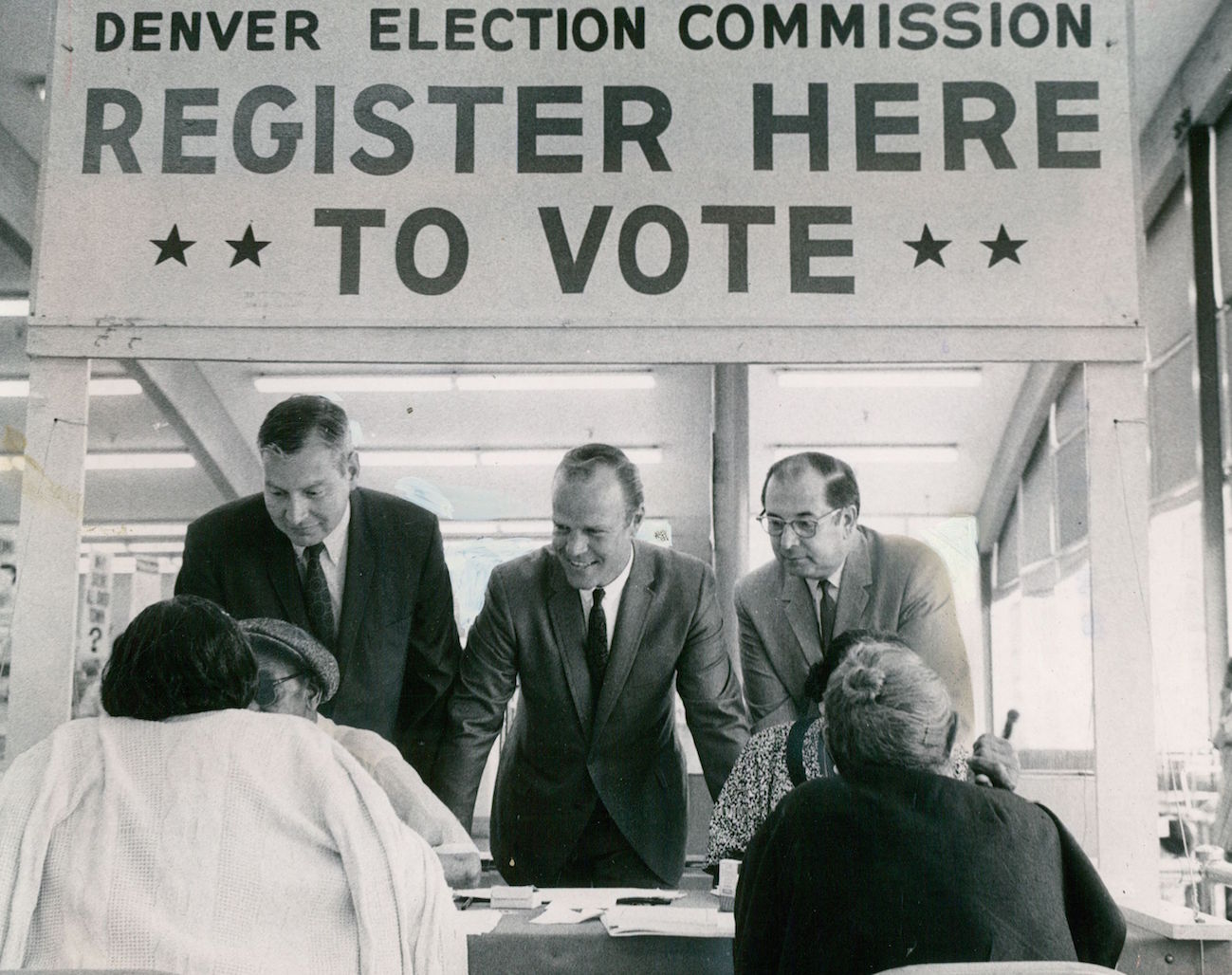
On Sept. 24, during National Voter Registration Day, volunteers all over the United States will help citizens sign up to vote in the upcoming election. For something that sounds so simple in theory, voter registration has long been the source of conflict in American politics. As the 2020 campaign gets underway, concerns range from the modern problem of hacking to the ever-present question of why and where it gets easier or harder to register and vote.
A quick look back at the first voter registration laws in the United States reveals that, when it comes to registration, things have never been simple.
In 1929, Joseph P. Harris, a professor of political science at the University of Wisconsin, surveyed the state of voter registration for the Brookings Institution. The hundreds of pages of research that he produced included an overview of how the whole system started:
The development [of voter-registration laws] has not been uniform throughout the country. There are, however, certain outstanding trends in the history of registration laws. The first registration law in this country was enacted in Massachusetts in 1800. This was followed by similar laws in other New England states, but very few states in other sections of the country adopted registration prior to 1860. From 1860 to 1880 laws were enacted in most of the older states in the North, first by the states with large cities, the law applying only to the large cities. From 1880 to 1900 the states of the West and South provided registration for the first time. In other parts of the country registration laws were extended to small cities, and in some states to rural sections.
…In 1742 Massachusetts limited the suffrage to owners of real estate valued at twenty pounds or more, and provided that the assessors of each town were to provide the town clerk with a copy of their land assessment for use in connection with elections. This was not a true registration list, but it is probably the earliest forerunner in this country of an official registration system.
In 1800 Massachusetts, as before mentioned, enacted the first registration law in the United States. The assessors of every town or plantation were required to prepare lists of qualified electors, and in the towns these lists were submitted to the selectmen, posted, and revised prior to each election. For the purpose of revision the selectmen or assessors met on the day of the election immediately preceding the voting to hear applications for registration.
According to one explanation, old restrictions on voting were seen by some as undemocratic, but the growing population and expanding suffrage meant that it was no longer possible for polling officials to just recognize the voters by sight. And early voter registration got the legal O.K. in Massachusetts too, in the 1832 case of Capen v. Foster, after a man who was qualified to vote turned up to cast his ballot and was denied the right because his name was not on the list of voters that, according to an 1821 Boston law, the city had drawn up. The court ruled that the existence of a voter registration system did not interfere with the right to vote, as long as the voter was given the appropriate opportunity to make sure he was registered.
Get your history fix in one place: sign up for the weekly TIME History newsletter
It wasn’t until the middle of the 19th century, however, that the idea of voter registration really spread throughout the country.
From the start, the question about voter registration that endures to this day was immediately an issue: Were these laws designed to cut down on fraud, or was the idea to keep certain types of people from voting?
As Alexander Keyssar points out in The Right to Vote: The Contested History of Democracy in the United States, early voter rolls were often compiled by assessors who went door-to-door, and they often missed poorer people. Other early registration systems, at a time of great nativist sentiment, were seen to target Catholics or immigrants, with tactics such as requiring registration only in areas with large minority populations. On the other hand, there was also serious concern in the United States that, without registration, a corrupt political machine system could sway election results.
As Daniel P. Tokaji put it in a 2008 William & Mary Bill of Rights Journal article about voter registration:
There can be little doubt that machine politics and attendant corruption made registration desirable and even necessary, especially in more heavily populated areas. At the same time, in both the North and the South, voter registration systems often served a more insidious purpose: they were used to keep eligible citizens from voting. Although white Democrats’ disfranchisement of southern blacks is the most notorious example, it is also clear that northern Republicans sometimes manipulated voter registration rules to disfranchise Democratic-leaning immigrants and working people. Voter registration has thus been a means not only of promoting election integrity, but also of impeding eligible citizens’ access to the ballot.
That paradox has endured as the registration system has evolved, and creative solutions are a frequent topic of discussion. For now, most Americans will find that, if they want to vote, they need to register—and that there’s no time like the present.
More Must-Reads from TIME
- Cybersecurity Experts Are Sounding the Alarm on DOGE
- Meet the 2025 Women of the Year
- The Harsh Truth About Disability Inclusion
- Why Do More Young Adults Have Cancer?
- Colman Domingo Leads With Radical Love
- How to Get Better at Doing Things Alone
- Michelle Zauner Stares Down the Darkness
Write to Lily Rothman at lily.rothman@time.com